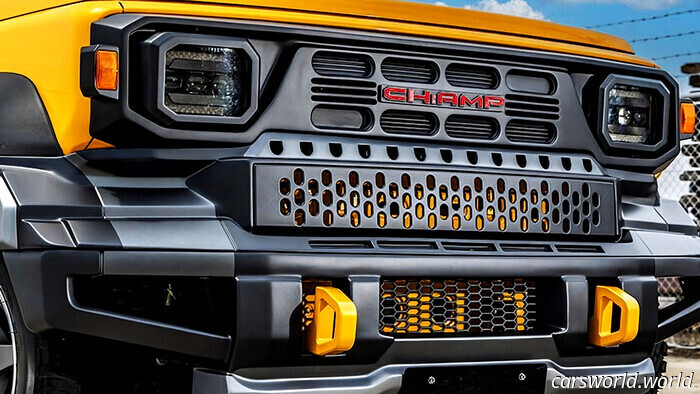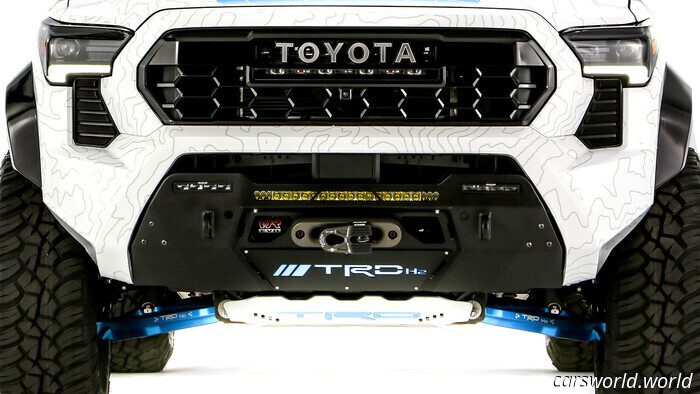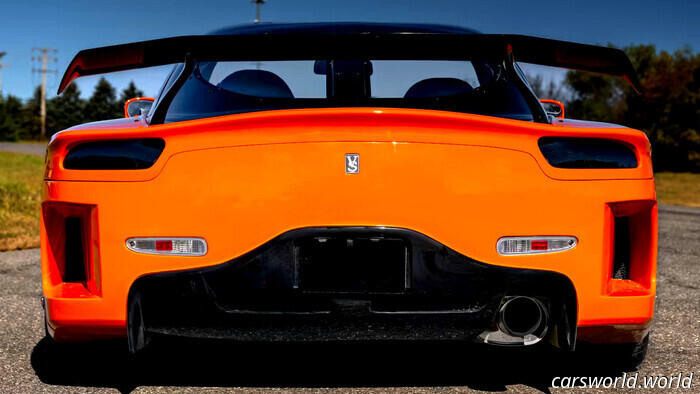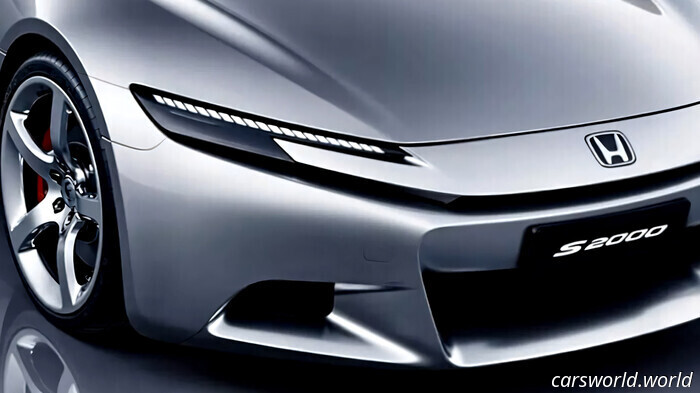-Nosediving-Without-The-Tax-Credit.jpg)
EV Sales Are (Predictably) Plummeting Without The Tax Credit
Acura
The most significant automotive news and reviews, without the fluff
Subscribe to our free daily newsletter to receive the important stories directly in your inbox every weekday.
With the first month of sales reports emerging following the tax credit changes, U.S. electric vehicle (EV) sales have suffered greatly. The highly publicized cessation of EV subsidies had the exact impact that analysts predicted, prompting sales to surge in the final months they were available (and likely leaving demand depressed for quite some time). Even where brands introduced their own incentives, sales have drastically decreased, and as automakers shift their focus from electric models to internal combustion engine (ICE) vehicles in the near future, we anticipate the segment will remain relatively slow.
Keep in mind that not all automakers provide monthly sales figures anymore, so a clearer industry-wide overview won't emerge until January (after the Q4 and full-year sales have been reported). Here’s a preliminary overview:
Hyundai – Ioniq 5 sales saw a steep decline, plummeting more than 60% compared to a year earlier. However, total Ioniq 5 sales are still nearly 25% higher for 2025, so it’s not entirely negative. Ioniq 6 sales dropped 52% in October and are down 4% for the year; even worse, they were already only selling in triple-digit monthly amounts. Hyundai has sold fewer than 10,000 of these sedans this year. Hyundai sold nearly as many Ioniq 9s as it did Ioniq 6s, but that’s not saying much…
Kia – EV6 sales also fell by two-thirds compared to last October, and the three-row EV9 saw a similar drop. EV6 sales have decreased by a third overall in 2025, contrasting with the Hyundai Ioniq 5. Kia does not separate Niro sales by powertrain, but the smaller crossover experienced a 75% increase last month despite an ongoing full-year sales deficit.
Honda – It’s not surprising that the Prologue suffered in October, dropping 80% to just over 800 units sold. However, this was still an improvement over the now-defunct Acura ZDX, which saw only 25 sales last month (down from 1,200 a year earlier).
Subaru – You might be surprised to know that Subaru was on track to match its 2024 total of just over 10,000 Solterras sold in 2025, but that momentum halted abruptly in October. Subaru managed to sell just 13 EVs last month.
In summary: It’s a tough situation. While it likely won’t remain this bleak in the long run, we’re not anticipating any major shifts in the segment anytime soon. Much of the pent-up demand was fulfilled when EVs were discounted while the credit was active, so even if prices haven’t changed significantly, it's reasonable to assume that automakers were spending more to sell vehicles while the government was still covering part of the discount.
The end result may not have differed much for the customer, but a considerable amount of potential profit vanished almost overnight, and automakers prefer to concentrate on selling models that won’t incur losses.
We’ll remain vigilant for any other significant updates regarding EV sales; until then, if you’re looking for leftover inventory, your preferred brand might be willing to negotiate just to clear it from the lot. It’s worth a shot.
Have a news tip? Contact us at [email protected]!
-Nosediving-Without-The-Tax-Credit.jpg)
Other articles
![The S2000 might make a comeback, but only if certain financial and platform challenges are resolved.
Honda engineers are eager to resurrect the iconic S2000 sports car.
Currently, factors such as cost, demand, and platform constraints make a new version unlikely.
The company emphasizes that any revival must honor its legacy and identity.
Enthusiast wish lists often revert to the question of which brands still offer a straightforward, focused two-seater designed for weekend drives and back roads. A close examination of Honda’s lineup reveals a notable absence: a performance-focused coupe or roadster.
For years, the S2000 held that position in Honda's offerings, a role that the significantly milder hybrid Prelude will not be able to fulfill unless a more aggressive Type R variant is created. Recently, the company suggested that the S2000 could return, but only after several critical elements align.
The Financial Equation
Chief Engineer Tomoyuki Yamagami noted that reviving the S2000 name holds significant importance for Honda. The ongoing challenge revolves around numbers and available resources.
On the sidelines of the Japan Mobility Show in Tokyo, Yamagami-san, who oversaw the new Prelude's development, shared with Australian publication Drive that the S2000 remains a cherished model for Honda.
“Of course, everyone thinks so,” he stated when asked about the possibility of a second-generation model. “Every Honda employee loves the S2000. Someday, I would like to [build another one].”
The issue is that the S2000 sets a high standard, and Honda won’t attempt to launch a modern version unless it meets or surpasses that expectation.
Currently, Honda lacks a suitable platform for an S2000 successor. Yamagami clarified that Honda wouldn’t partner with another brand for such a vehicle, unlike Toyota's collaborations with Subaru on the GR86 and with BMW on the GR Supra.
“We understand the expectations for a Honda [S2000], so it’s crucial for us to maintain Honda’s DNA,” he explained.
Can Honda Make the Numbers Work?
In addition to engineering concerns, pricing is another hurdle. “A conventional sports car is very costly [to design, develop, and build], and the younger generation cannot afford [to purchase them],” Yamagami elaborated. “A sports car, due to its limited production, leads to high prices.”
When the original S2000 debuted in 1999, it was priced around AU$69,950 in Australia, which translates to approximately AU$140,000 today. In the US, it started at $32,000, roughly $61,573 when adjusted for inflation.
Models like the new Prelude benefit from shared parts and a broader market. The automaker can price it competitively because it draws from the Civic, including the platform, hybrid powertrain, and various unseen components.
The new Honda Prelude hybrid coupe.
In contrast, the S2000 was a specialized vehicle with a completely unique layout and drivetrain. Its high-revving 2.0-liter F20C and later 2.2-liter F22C1 engines, both mounted longitudinally for rear-wheel drive, are among the few Honda four-cylinder engines engineered specifically for that configuration.
Nonetheless, Honda reports that customers are still expressing concerns over the pricing of the new two-door HEV.
“This new Prelude was created, produced, and developed as a blend of the Civic, Civic Type R, and HEV, allowing us to lower the price. Yet, we still receive feedback from buyers indicating that it’s considered too expensive.”
In summary, Honda needs to determine a way to validate the costs of producing a new S2000, and as of now, they are unable to do so.](https://carsworld.world/thumbs/carsworld.world-700/7b/cc/Who-Asked-For-A-16-Million-Hybrid-Hypercar-Based-On-A-69-Camaro?-|-Carscoops.jpg) The S2000 might make a comeback, but only if certain financial and platform challenges are resolved.
Honda engineers are eager to resurrect the iconic S2000 sports car.
Currently, factors such as cost, demand, and platform constraints make a new version unlikely.
The company emphasizes that any revival must honor its legacy and identity.
Enthusiast wish lists often revert to the question of which brands still offer a straightforward, focused two-seater designed for weekend drives and back roads. A close examination of Honda’s lineup reveals a notable absence: a performance-focused coupe or roadster.
For years, the S2000 held that position in Honda's offerings, a role that the significantly milder hybrid Prelude will not be able to fulfill unless a more aggressive Type R variant is created. Recently, the company suggested that the S2000 could return, but only after several critical elements align.
The Financial Equation
Chief Engineer Tomoyuki Yamagami noted that reviving the S2000 name holds significant importance for Honda. The ongoing challenge revolves around numbers and available resources.
On the sidelines of the Japan Mobility Show in Tokyo, Yamagami-san, who oversaw the new Prelude's development, shared with Australian publication Drive that the S2000 remains a cherished model for Honda.
“Of course, everyone thinks so,” he stated when asked about the possibility of a second-generation model. “Every Honda employee loves the S2000. Someday, I would like to [build another one].”
The issue is that the S2000 sets a high standard, and Honda won’t attempt to launch a modern version unless it meets or surpasses that expectation.
Currently, Honda lacks a suitable platform for an S2000 successor. Yamagami clarified that Honda wouldn’t partner with another brand for such a vehicle, unlike Toyota's collaborations with Subaru on the GR86 and with BMW on the GR Supra.
“We understand the expectations for a Honda [S2000], so it’s crucial for us to maintain Honda’s DNA,” he explained.
Can Honda Make the Numbers Work?
In addition to engineering concerns, pricing is another hurdle. “A conventional sports car is very costly [to design, develop, and build], and the younger generation cannot afford [to purchase them],” Yamagami elaborated. “A sports car, due to its limited production, leads to high prices.”
When the original S2000 debuted in 1999, it was priced around AU$69,950 in Australia, which translates to approximately AU$140,000 today. In the US, it started at $32,000, roughly $61,573 when adjusted for inflation.
Models like the new Prelude benefit from shared parts and a broader market. The automaker can price it competitively because it draws from the Civic, including the platform, hybrid powertrain, and various unseen components.
The new Honda Prelude hybrid coupe.
In contrast, the S2000 was a specialized vehicle with a completely unique layout and drivetrain. Its high-revving 2.0-liter F20C and later 2.2-liter F22C1 engines, both mounted longitudinally for rear-wheel drive, are among the few Honda four-cylinder engines engineered specifically for that configuration.
Nonetheless, Honda reports that customers are still expressing concerns over the pricing of the new two-door HEV.
“This new Prelude was created, produced, and developed as a blend of the Civic, Civic Type R, and HEV, allowing us to lower the price. Yet, we still receive feedback from buyers indicating that it’s considered too expensive.”
In summary, Honda needs to determine a way to validate the costs of producing a new S2000, and as of now, they are unable to do so.
Blazin Rods' newest product is set for limited production and comes with a sky-high price that exceeds its astonishing performance.
The S2000 might make a comeback, but only if certain financial and platform challenges are resolved.
Honda engineers are eager to resurrect the iconic S2000 sports car.
Currently, factors such as cost, demand, and platform constraints make a new version unlikely.
The company emphasizes that any revival must honor its legacy and identity.
Enthusiast wish lists often revert to the question of which brands still offer a straightforward, focused two-seater designed for weekend drives and back roads. A close examination of Honda’s lineup reveals a notable absence: a performance-focused coupe or roadster.
For years, the S2000 held that position in Honda's offerings, a role that the significantly milder hybrid Prelude will not be able to fulfill unless a more aggressive Type R variant is created. Recently, the company suggested that the S2000 could return, but only after several critical elements align.
The Financial Equation
Chief Engineer Tomoyuki Yamagami noted that reviving the S2000 name holds significant importance for Honda. The ongoing challenge revolves around numbers and available resources.
On the sidelines of the Japan Mobility Show in Tokyo, Yamagami-san, who oversaw the new Prelude's development, shared with Australian publication Drive that the S2000 remains a cherished model for Honda.
“Of course, everyone thinks so,” he stated when asked about the possibility of a second-generation model. “Every Honda employee loves the S2000. Someday, I would like to [build another one].”
The issue is that the S2000 sets a high standard, and Honda won’t attempt to launch a modern version unless it meets or surpasses that expectation.
Currently, Honda lacks a suitable platform for an S2000 successor. Yamagami clarified that Honda wouldn’t partner with another brand for such a vehicle, unlike Toyota's collaborations with Subaru on the GR86 and with BMW on the GR Supra.
“We understand the expectations for a Honda [S2000], so it’s crucial for us to maintain Honda’s DNA,” he explained.
Can Honda Make the Numbers Work?
In addition to engineering concerns, pricing is another hurdle. “A conventional sports car is very costly [to design, develop, and build], and the younger generation cannot afford [to purchase them],” Yamagami elaborated. “A sports car, due to its limited production, leads to high prices.”
When the original S2000 debuted in 1999, it was priced around AU$69,950 in Australia, which translates to approximately AU$140,000 today. In the US, it started at $32,000, roughly $61,573 when adjusted for inflation.
Models like the new Prelude benefit from shared parts and a broader market. The automaker can price it competitively because it draws from the Civic, including the platform, hybrid powertrain, and various unseen components.
The new Honda Prelude hybrid coupe.
In contrast, the S2000 was a specialized vehicle with a completely unique layout and drivetrain. Its high-revving 2.0-liter F20C and later 2.2-liter F22C1 engines, both mounted longitudinally for rear-wheel drive, are among the few Honda four-cylinder engines engineered specifically for that configuration.
Nonetheless, Honda reports that customers are still expressing concerns over the pricing of the new two-door HEV.
“This new Prelude was created, produced, and developed as a blend of the Civic, Civic Type R, and HEV, allowing us to lower the price. Yet, we still receive feedback from buyers indicating that it’s considered too expensive.”
In summary, Honda needs to determine a way to validate the costs of producing a new S2000, and as of now, they are unable to do so.
Blazin Rods' newest product is set for limited production and comes with a sky-high price that exceeds its astonishing performance.
 Suzuki Jimny Mimics Its Best Toyota Look Yet | Carscoops
The newest face-swapping kit for the compact off-roader is inspired by Toyota's affordable pickup, which serves as the foundation for the Land Cruiser FJ.
Suzuki Jimny Mimics Its Best Toyota Look Yet | Carscoops
The newest face-swapping kit for the compact off-roader is inspired by Toyota's affordable pickup, which serves as the foundation for the Land Cruiser FJ.
 Toyota Created a Truck That Allows You to Shower Using Its Own Exhaust Water | Carscoops
Water emitted from the tailpipes of the Tacoma H2 concept can be repurposed for washing or showering, thanks to a recovery system that is pending a patent.
Toyota Created a Truck That Allows You to Shower Using Its Own Exhaust Water | Carscoops
Water emitted from the tailpipes of the Tacoma H2 concept can be repurposed for washing or showering, thanks to a recovery system that is pending a patent.
 Fulfill Your Tokyo Drift Aspirations With This VeilSide Mazda RX-7 | Carscoops
An almost flawless replica of the RX-7 from Tokyo Drift is set to go up for auction, featuring turbo enhancements and a level of detail comparable to that seen in the film.
Fulfill Your Tokyo Drift Aspirations With This VeilSide Mazda RX-7 | Carscoops
An almost flawless replica of the RX-7 from Tokyo Drift is set to go up for auction, featuring turbo enhancements and a level of detail comparable to that seen in the film.
 Honda Aims to Create a New S2000, But It's More Complicated Than It Seems | Carscoops
The S2000 may make a comeback, but only if the financial and platform obstacles are overcome.
Honda Aims to Create a New S2000, But It's More Complicated Than It Seems | Carscoops
The S2000 may make a comeback, but only if the financial and platform obstacles are overcome.
EV Sales Are (Predictably) Plummeting Without The Tax Credit
Consumers who sustained the demand for the EV segment throughout most of 2025 disappeared in the month following the removal of the EV tax credit.
